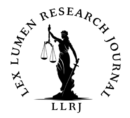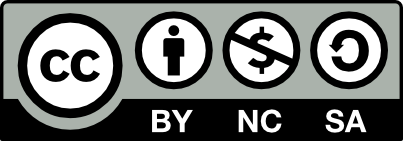Written by Nupur Goyal,
Intern-Lex Lumen Research Journal,
June 2025
Introduction
Juvenile justice lies at the intersection of law, society, and psychology. As young people differ significantly from adults in their cognitive, emotional, and social development, the role of psychology becomes essential in understanding and addressing juvenile delinquency. Adolescents are not only more susceptible to impulsive behavior and peer influence, but they are also in a critical developmental phase where timely intervention can redirect their path. Psychology provides insight into the causes of youth offending and plays a transformative role in creating a rehabilitative and child-sensitive justice system.
Understanding the Adolescent Brain
Psychological research has revealed that adolescence is a period of rapid and uneven brain development. The areas of the brain responsible for self-control, judgment, and long-term planning are still maturing, often lagging behind emotional and reward-driven impulses. This mismatch can make teenagers more prone to risk-taking behavior, despite being aware of potential consequences. Rather than a lack of knowledge about risks, their choices are often shaped by heightened emotions, peer dynamics, and social validation. Thus, their behavior must be viewed through the lens of developmental psychology rather than purely legal responsibility.
Young people who come into contact with the juvenile justice system are disproportionately affected by mental health disorders. Conditions such as conduct disorder, ADHD, anxiety, depression, substance abuse, and trauma-related disorders are frequently reported among juvenile offenders. These psychological challenges are both a cause and a consequence of delinquent behavior. Adolescents with intellectual disabilities are also overrepresented in correctional facilities and are at a higher risk of reoffending. Addressing these underlying mental health issues is critical for effective rehabilitation and preventing cycles of criminal behavior.
A key insight from psychological and criminological studies is that many juvenile offenders have also been victims of crime. Experiences of abuse, neglect, bullying, or violence can lead to trauma, which in turn may manifest in delinquent behavior. The line between victim and offender often blurs in youth, making it imperative that the justice system takes a holistic view of each individual’s background and psychological history. Understanding these dual roles allows mental health professionals and legal authorities to respond with empathy and tailored interventions.[1]
Psychological Perspectives on Juvenile Delinquency
Psychologists have proposed several theories to explain why some adolescents engage in delinquent behavior. These frameworks offer valuable insights into the mental, emotional, and social processes that contribute to criminal tendencies among youth.
- Psychodynamic Theory (Freud): According to Sigmund Freud, early childhood experiences play a fundamental role in shaping personality and future behavior. Children who endure trauma, neglect, or abuse may develop unresolved internal conflicts. When the “superego” (which governs moral judgement) is underdeveloped, it can result in impulsive actions and criminal behavior due to a lack of guilt or moral restraint.
- Behavioral Theory (Skinner): B.F. Skinner’s theory emphasizes that behavior is learned through a system of rewards and punishments. If a child receives positive reinforcement—such as social approval or financial gain—for engaging in criminal acts, they may continue this behavior. Conversely, if consequences are inconsistent or absent, delinquency is likely to persist.
- Social Learning Theory (Bandura): Albert Bandura proposed that behavior is learned by observing and imitating others. Children raised in environments where criminal behavior is normalized—whether through parents, peers, or media figures—may replicate such actions. This theory highlights the significant impact of role models on a young person’s conduct.
- Cognitive Theories: These theories explore how juveniles perceive and interpret situations. Faulty thought patterns, such as shifting blame or rationalizing wrongdoing, can lead to delinquent acts. Additionally, poor impulse control and inadequate problem-solving abilities contribute to risky decision-making.[2]
Risk Factors Influencing Juvenile Behavior
Juvenile delinquency stems from a web of interrelated risk factors:
- Individual factors such as low intelligence, impulsivity, poor emotional regulation, and mental health disorders, such as ADHD or conduct disorder, along with high levels of aggression and low self-control, impair a child’s ability to assess consequences or resist harmful behavior.
- Family environment plays a major role. Dysfunctional households, absence of nurturing relationships, abuse, and criminal behavior in parents or siblings increase the likelihood of youth engaging in crime.
- Peer influence becomes especially strong during adolescence. In search of belonging, many teens conform to delinquent peer norms, viewing risky or illegal behavior as a path to acceptance or status.
- School-related factors like academic failure, disengagement, and lack of moral education also push children toward antisocial paths.
- Community and media exposure further shape behavior. Youth from disorganized neighborhoods with high crime rates, poor housing, and limited role models are more vulnerable. Media portrayals that glamorize violence, crime, and substance use can distort a child’s perception of right and wrong.
Understanding these layers is essential for building comprehensive preventive strategies and rehabilitation frameworks.[3]
The Indian Juvenile Justice Framework and Psychological Care
The Juvenile Justice (Care and Protection of Children) Act, 2015, reflects a psychological understanding of juvenile delinquency. It focuses on rehabilitation, reintegration, and child-friendly legal procedures. Mental health professionals (MHPs) are seen as crucial actors in prevention, assessment, therapy, and reformation. Provisions such as psychological assessments for juveniles accused of serious crimes and the requirement of qualified professionals on Juvenile Justice Boards reflect this integration of psychology into law.
Yet, the implementation of these provisions faces several hurdles. A shortage of trained professionals, lack of institutional awareness, limited funding, and poor mental health infrastructure continue to hinder the realization of the law’s reformative vision. Moreover, social stigma and harsh media narratives often reduce public empathy for juvenile offenders, making reintegration more difficult.[4]
Reforming Through Psychological Support
Effective reform requires that psychological care be embedded at every level of the juvenile justice process. Institutions must be equipped with mental health professionals to offer regular counseling, trauma-informed care, and therapeutic services. Staff should be trained to recognize behavioral issues and respond with empathy rather than punishment. Courts should consider psychological evaluations when determining sentencing or rehabilitation pathways. Peer-led programs, family counseling, and vocational training based on a child’s interests can all aid in successful reintegration.
Conclusion
Psychology offers a crucial lens through which juvenile justice can be reimagined—not as a punitive system, but as a rehabilitative space for growth and transformation. Understanding the adolescent mind, the risk factors they face, and the trauma they carry is essential for any justice system that seeks to truly serve children. Implementing laws with compassion, ensuring mental health support, and building intersectoral cooperation between legal, health, and community actors can help shift the focus from retribution to reformation. With the right psychological interventions, the cycle of juvenile delinquency can be broken, allowing young individuals not just a second chance, but a real opportunity to heal, reform, and thrive.
References
- West Bengal Judicial Academy: Juvenile Delinquency and Child Psychology available at https://www.wbja.nic.in/ (Last visited on 19 June 2025)
- The Psychology of Juvenile Delinquency: Understanding Causes and Solutions by Angelito Malicse available at philarchive.org (Last visited on 19 June 2025)
- Prof Ajay Ranga and Ms Kavita, “Psychological and Theoretical Perspectives on Juvenile Delinquency” Vol 14 No. 2, Indian Journal of Psychological Science (July-2021)
- Gupta Snehil and Rajesh Sagar, ” Juvenile Justice System, Juvenile Mental Health, and the Role of MHPs: Challenges and Opportunities”, 42(3) Indian Journal of Psychological Medicine (2020 Apr 25)
[1] West Bengal Judicial Academy: Juvenile Delinquency and Child Psychology available at https://www.wbja.nic.in/ (Last visited on 19 June 2025)
[2] The Psychology of Juvenile Delinquency: Understanding Causes and Solutions by Angelito Malicse available at www.philarchive.org (Last visited on 19 June 2025)
[3] Prof Ajay Ranga and Ms Kavita, “Psychological and Theoretical Perspectives on Juvenile Delinquency” Vol 14 No. 2, Indian Journal of Psychological Science (July-2021)
[4]Gupta Snehil and Rajesh Sagar, ” Juvenile Justice System, Juvenile Mental Health, and the Role of MHPs: Challenges and Opportunities”, 42(3) Indian Journal of Psychological Medicine (2020 Apr 25)


